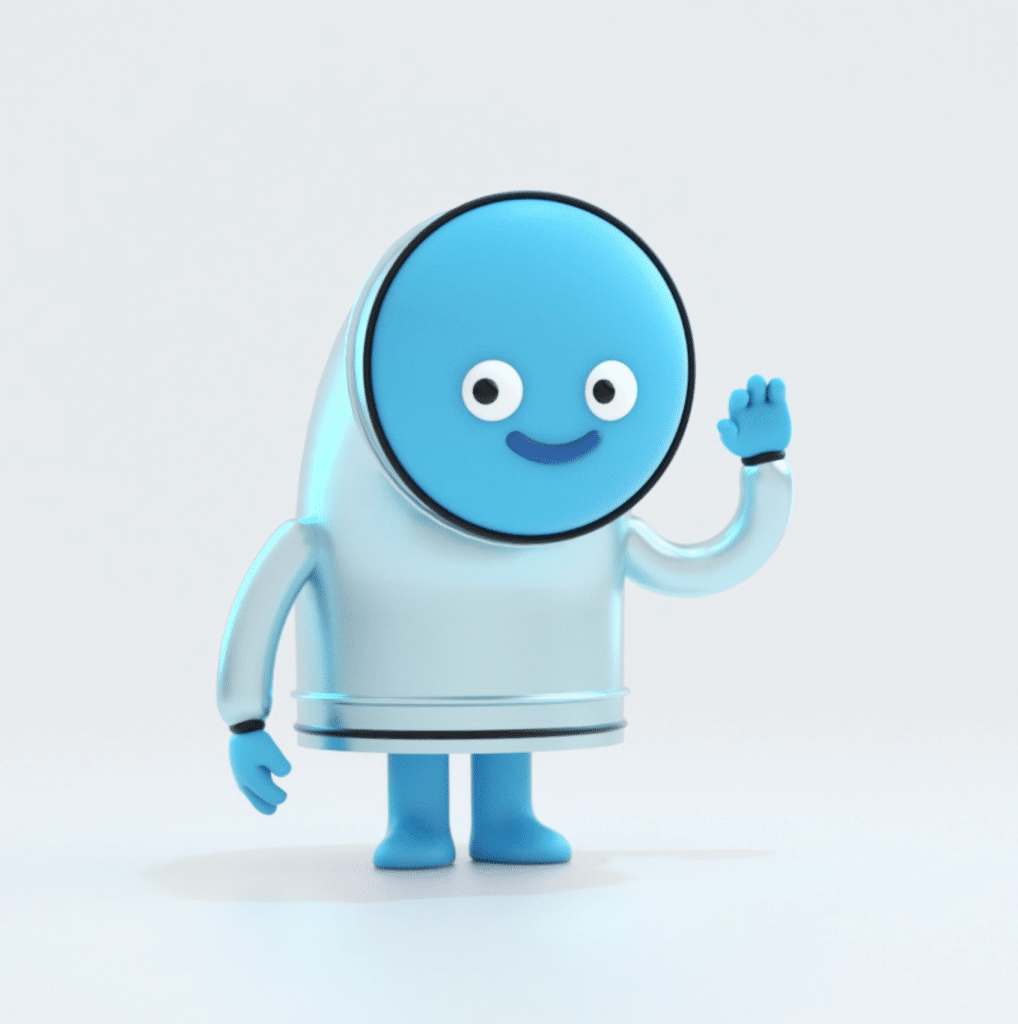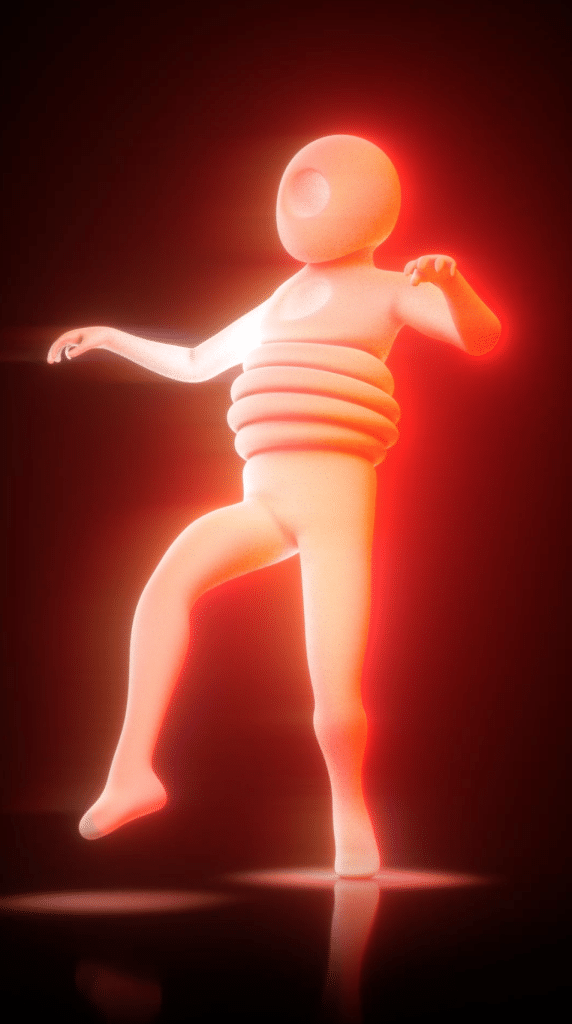In this first episode of Let’s Talk Design Shorts, I ask 6 questions to Belgium-based Peter Serruys. Peter started his career as a cook and moved on to become a 3D Artist.
Shorts is available on
YouTube Spotify Apple Podcasts Google Podcasts



Transcript
Timothy Helmer: [00:00:00] Hi, and welcome to Shorts, our short version of Let’s Talk Design, where I, Timothy, interview designers to find out what makes them tick. In this episode, I ask six questions to Peter Serruys, who is an independent 3D artist who specializes in character design. So Peter, how did you get started with 3D illustration?
Peter Serruys: When I became a freelance designer over in 2011.
After working already for seven years in agencies, I started to learn 3D in my free time. In the beginning I watched just a bunch of 3D tutorials and recreated what I just saw. At the time I worked mostly for activation agencies. On sale pitches, I did more set and prop design than real illustration work, but it was perfect to, to learn the software.
After a while I was getting familiar with the software and then I started to let people know that [00:01:00] I also do 3D design and illustration for advertising. The first three D visuals for advertising were simple packshots and isometric illustrations. And with every time pushing it and learning new software, I was able to make and to model more complex visuals, I was showing my learning progress on Instagram.
And more and more people were getting familiar. That I was doing besides of 2D, also 3D and in 2018 I made the switch to focus full-time on 3D design, character design and motion design.
Timothy Helmer: So why did you go for character design?
Peter Serruys: I didn’t really draw any character before I was 20 years old before that I…
I did cooking school and worked for two years in a restaurant after those two years I was a little bit tired of working in that restaurant, [00:02:00] and I didn’t see my future as a cook. So I decided to study web design by accident, I subscribed to a digital designer program. I thought it was web design, but it was not.
I had to learn everything from zero and I became familiar with graphic design and illustration. In our last year, we had to design for an existing brand mascot. I really enjoyed the process of designing a simple character for a brand. And I also started to explore a little bit with graffiti and sketching, making my own stickers and a passion for character design and illustration was born at that time.
Timothy Helmer: So how did you maintain your own identity in your work while also catering to client requests?
Peter Serruys: For me personally the client is king, but there is always a place for conversation. If I, for example, [00:03:00] reach out to people to help me out on a project, then I pay them for copy, or to make sound design, I really want they do what I brief them, but if they can convince me that they have a better idea, I’m always open for that.
I prefer that a client or an agency really knows what they want me to design. And hopefully in their mood board, there is work from my own portfolio. That’s always a plus. Every project that you will do with a client is a little journey that you are in together. So maybe for a few weeks or months, so you have to make the best out of it.
There is no fun in a project when there is frustration. If you propose something and the client doesn’t like it, you as designer have to find out and come up with a solution. I think it’s, you really have to choose there you’re in battle if the client really says [00:04:00] no, then you really just have to find a solution to please your client.
In my free time, I do whatever I want. But if people pay me for a job, I like to please them and then I just put my ego aside.
Timothy Helmer: What has been the most rewarding aspect of your career thus far?
Peter Serruys: The most rewarding aspect of my career so far the evolution that I made from a cook to a independent 3D artist.
That’s what keeps me going and why I love my, my job. It’s always about making progress. For example, right now, I am I’m working on a new designer toy. It’s a lot of new techniques. It’s a lot of failing, learning making so many mistakes, but out of every mistake You learn something new, and at the end you wait with the next one I will be making.
I [00:05:00] will be better in it, I’ve made progress, made evolution. To have all this is freedom, that I can explore new things. And to do this in my own studio to have some free time, also personal work, that’s really rewarding. If you look back when I was 19 years old, when I was working in a restaurant as a cook, then I really didn’t like my job.
So now I’m really, enjoying what I’m doing and I’m always trying to get better at it and learning stuff.
Timothy Helmer: How did you find motivation and avoid burnout in the face of tight deadlines and long hours at your desk?
Peter Serruys: Me personally, I like to spend hours in my studio. Even when there’s less work, I’m always working on something personal.
Trying new stuff out that really keeps me going between 6 and 8 PM I try to be with my family. I think that’s very important even [00:06:00] when there is a deadline. I really like to spend a few hours with my family during the weekdays and then later in the night I go back to the studio.
It’s only a five-minute walk, so when I leave my studio, it’s not, it’s not next to my house so it’s like I really have to walk away from this and try to switch off, be there for my family or, or friends. But I really try to avoid working all the time at night or in the weekends. I think you can do it
for some projects, I do it often when it’s very busy, I will go work at night to get stuff done. Definitely when you’re working on different projects. Or in the weekend, but you can do it for a few weeks, but if you’re doing it for months and keep doing it, it’s okay, you’ll, you will earn maybe more money, but it’ll, it’s not good for your, for your health and for your [00:07:00] mental health even, you really have to, sometimes we have to switch off and do other stuff, go out and do some sports.
And then what I really also like to do is go to those conferences design conferences. I try to do two of them two, two or three of them a year. And it’s really nice to meet like-minded people Just have a chat with them or ask them how they did kind of a project, listen to the talks go have food with them and yeah, just learn new people and have some human contact because if you are a designer and I think definitely with 3D you are a lot behind the computer.
Timothy Helmer: Here is my last question. How do you think AI will influence 3D illustration in the future?
Peter Serruys: The software will get better and faster. When I started, I didn’t have the option to have a real-time render. You had to [00:08:00] wait for hours to see the results. So, you have to think about your moves because you knew when you did some other lights set up and then you really want to see how they render look like, you have to do it all over the counter, but still, it was not real-time, so you still have to wait a few minutes sometimes, like.
You did like a big render for four hours and then you saw all these little mistakes and then you have to do it all over again. So now it’s already pretty fast with the GPU rendering. But I assume with AI it will it will help our workflow. It will speed up our design, animation and render process.
Then about, because now we see a lot of prompting for me personally. I like to model and create my own stuff. But I also get inspired by other people’s work. So but I think if for example, I like to start from the sketch or to sculpt my own character instead of just [00:09:00] typing a prompt.
If you just like typing and then have to wait for the result. For me, it feels like going to Pinterest making a mood board that you have to type something to get the result. For me, I don’t really like to make mood boards or looking for images as a reference. The big downside of I think AI in illustration is that there will be so much noise that it will be even harder to stand out.
Everybody now can already work with a lot of these free tools, but that doesn’t mean that all the output is useful. You still have, like a story to tell to make a beautiful character, but if there isn’t a story behind, it’s just, like, a nice character, and I think if you want to stand out, there always have to be, like, a certain value like, with yeah, there has to be a story to be to be told, and just by prompting [00:10:00] something. Okay. Maybe you can tell the story, but if you make like an artwork, there’s always or now there’s like an artist behind it. There is a story why he created that work. I have the impression with AI, it’s not anymore about the artists. It’s about which software they used what kind of prompt.
I think still, it’s still interesting if you do in a situation that you can draw yourself and maybe use AI to get inspiration. I see guys who machine learning AI their own work and then give them inspiration to make new stuff. I think that’s really, really a good thing, but just creating with prompt artwork, if that’s the future, I think I’m out I don’t really, like, the…
idea I think just prompting for me. I like to sculpt my characters. They have this like happy accidents when you make something and you start [00:11:00] from a sketch and it turns out to something else. I really like the process of it.
Timothy Helmer: Thanks for listening or watching. You can subscribe to the series on YouTube and your favourite podcast app.
Feel free to share some tips and feedback on those platforms. Your feedback is essential to improve this series. Let’s talk soon.

